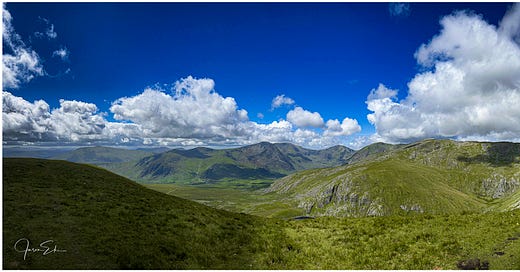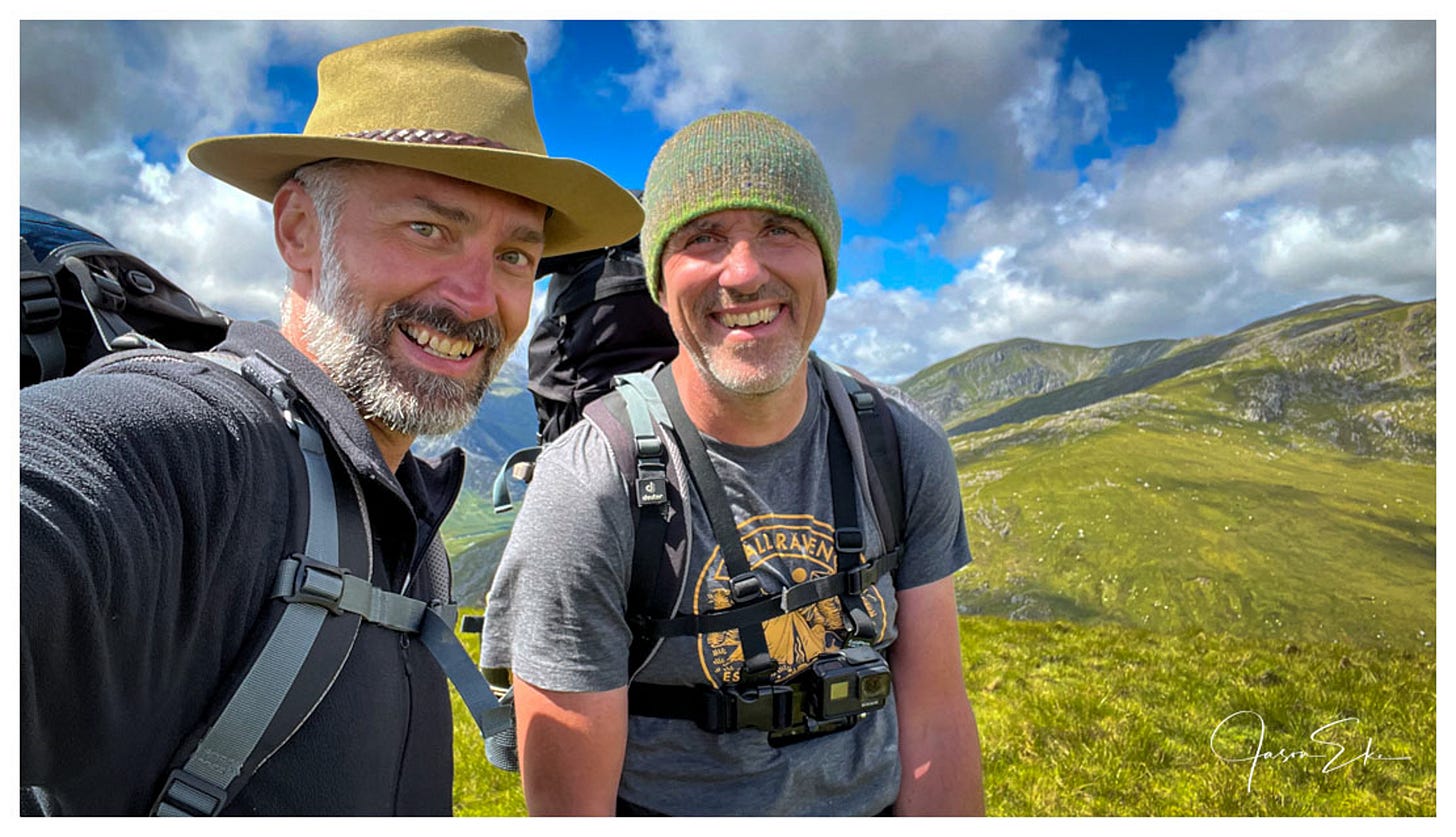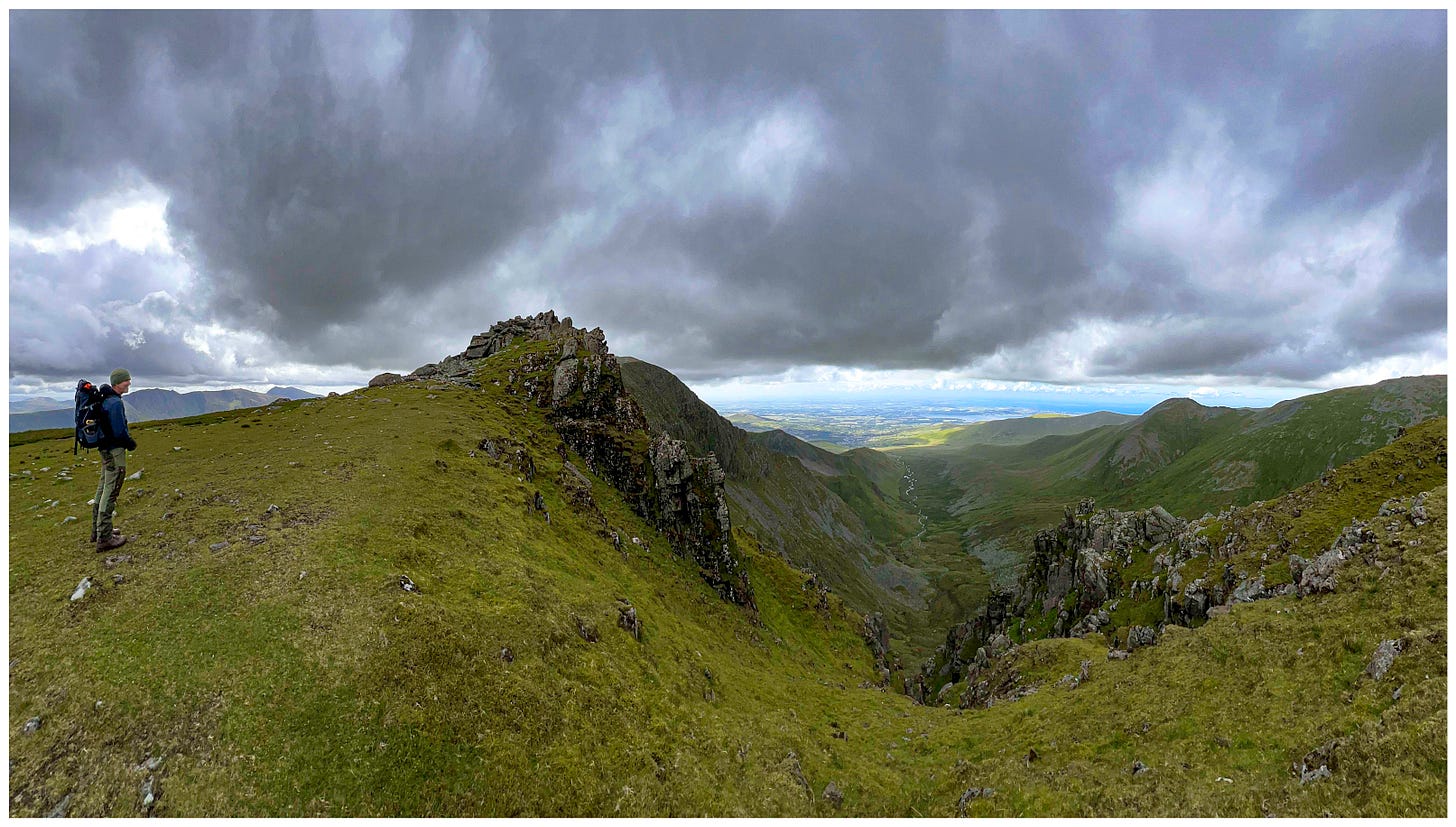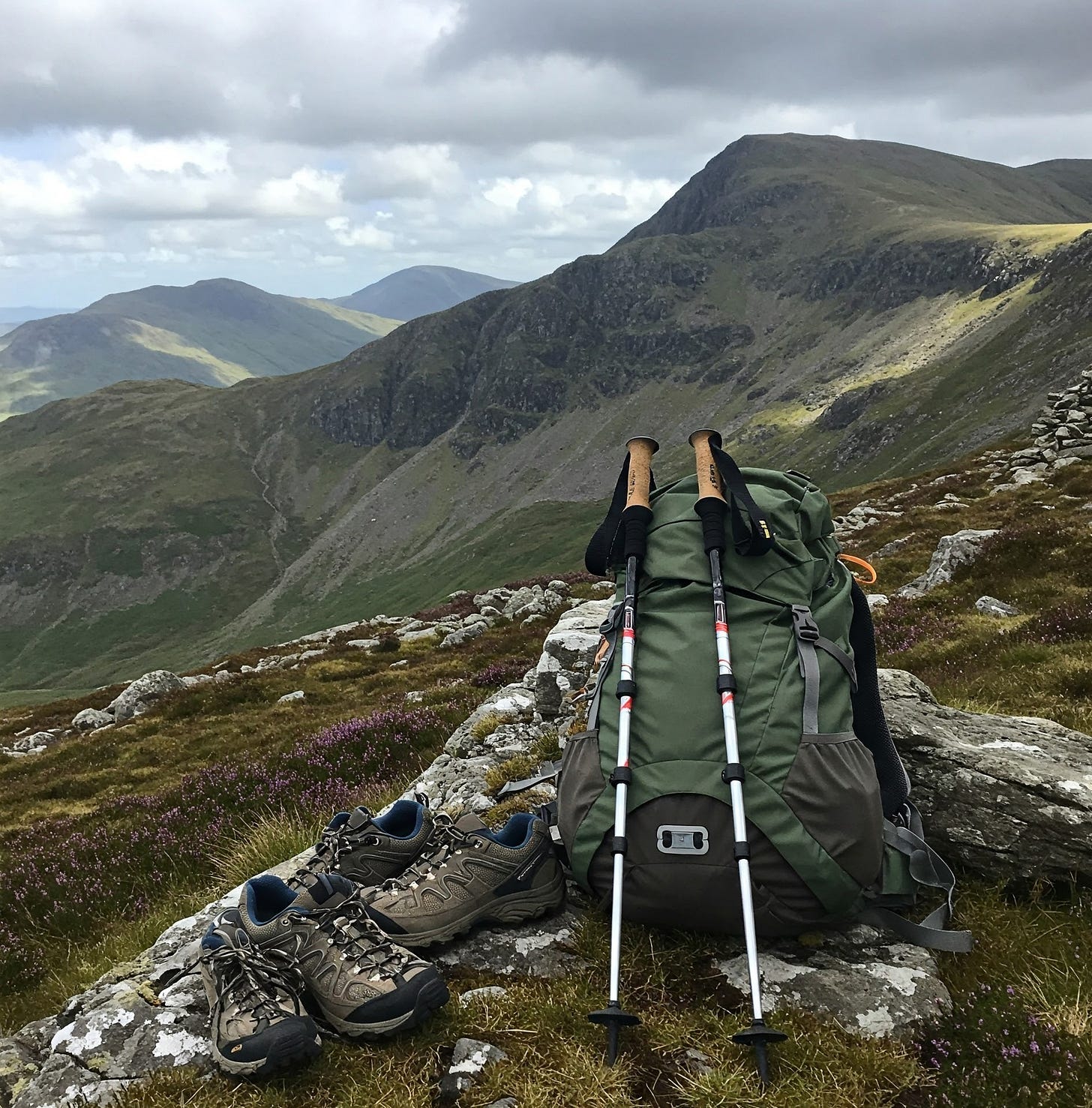Hiking the High Country: The Carneddau Range in Snowdonia
Where the Air Thins and the Views Explode
Imagine yourself standing atop a windswept peak, the world sprawled beneath you like a rumpled tapestry. Mountains roll into the distance, their jagged ridges clawing at a sky the colour of polished pewter. This is Carnedd Llewelyn, at 1,064m (3490 ft) it is the highest point of the Carneddau range and a crown jewel of Snowdonia National Park, but reaching this breathtaking vista is no walk in the park.
The Carneddau is a land of extremes, where emerald valleys give way to unforgiving slopes, and the weather can change in the blink of an eye, so it's a place that demands respect but rewards those who come prepared with an unforgettable experience.
A Landscape Forged in Fire and Ice
The journey to this breathtaking vista is no walk in the park. The Carneddau is a land of extremes, where emerald valleys give way to unforgiving slopes and the weather can change in the blink of an eye. It's a place that demands respect but rewards those prepared with an unforgettable experience.
As you trace the path upwards, you're traversing a landscape sculpted by glaciers millions of years ago. The Carneddau, like much of Snowdonia, is a product of immense volcanic forces. Jagged peaks were carved from molten rock, later smoothed and sharpened by the relentless grind of ice. The result is a terrain of dramatic contrasts, where sheer cliffs plunge into glacial valleys dotted with serene lakes.
The ever-present wind whispers chilling tales of this ancient past, carrying the scent of damp earth and heather. Look closely, and you might spot traces of the hardy souls who have ventured here before you. Neolithic burial chambers and Bronze Age stone circles hint at a long and fascinating human connection to these wild mountains.
A Climber's Challenge, a Trekker's Triumph
I made the hike a few weeks after finishing my Camino Primitivo, in Asturias, Spain. It was a special trip for me, to travel to my ancestral home of England and discover the land of my fathers. I was new to the Carneddau and a guest of a fast friend, an expert in outdoor travel and a Youtube sensation: Simon, a Bloke in the Woods. Simon and I had been in contact through correspondence for several years, and this was our first time adventuring together.
The ascent of Carnedd Llewelyn is a challenge but one that is well within reach for reasonably fit hikers with a sense of intrepidity. The route, while strenuous, offers a variety of terrains, from grassy slopes to rocky scrambles. There's a certain satisfaction to be found in pushing your limits, feeling the burn in your legs and the exhilaration of reaching a new vantage point with each step.
But the true reward comes at the summit. The world stretches out before you in all its untamed glory. To the north, the Isle of Anglesey shimmers like a jewel in the Irish Sea. To the south, the peaks of Snowdonia rise in a majestic procession. It's a panorama that humbles you, reminding you of the vastness and power of nature.
A Word of Caution and Respect
The Carneddau can be an unforgiving place, because weather conditions can change rapidly, and visibility can drop to zero in a matter of minutes. Therefore, proper preparation, including sturdy boots, hiking poles, and a backpack with essentials, is essential. The mountains can be unpredictable, always be aware of your surroundings and don't hesitate to turn back if the conditions become unsafe.
Let's start with the basics. Footwear is king. A sturdy pair of hiking boots with good ankle support is non-negotiable. You'll be traversing rocky terrain, scrambling over scree, and possibly even encountering patches of snow, so your feet need to be well-protected and comfortable.
And then there are the poles. Now, I know what you're thinking: "Do I really need those things?" Trust me, they make a world of difference. Hiking poles are your extra set of legs, providing stability on uneven ground and reducing strain on your knees, especially on steep descents. Think of them as an investment in your knees for years to come.
But what about the rest? Well, layering is key. The weather in the mountains can change dramatically in a matter of minutes. Pack a waterproof jacket and pants, a fleece, and a few base layers. Don't forget a hat, and gloves to help protect you from the wind.
Hydration is also crucial. Carrying plenty of water and food is important. Pack energy-rich snacks like trail mix, dried fruit, and energy bars to keep you fueled throughout the day. If you’re up for the added bulk, a small jet stove and some instant soup is a nice treat to warm you up at the summit.
It goes without saying, that navigation is paramount. A map and compass are essential, even in the age of GPS. Learn basic map and compass skills before you go, and consider investing in a lightweight GPS device as a backup.
And finally, don't forget the sunscreen, sunglasses, a first-aid kit (including blister treatment!), and insect repellent.
A Rendezvous with Solitude
Hiking the Carneddau is more than just a physical challenge; it's a chance to commune with nature in its rawest form. With the right equipment and a healthy dose of respect for the mountains, you can ensure a safe and enjoyable adventure. The solitude of the mountains allows you to shed the worries of everyday life and reconnect with your inner self.
So, if you're looking for a challenging adventure that will test your limits and leave you breathless in every sense of the word, then look no further than the Carneddau. Just be sure to come prepared, respect the power of the mountains, and embrace the solitude. The rewards, as you'll discover, are more than worth the effort.
You might also like:
Why Skills Matter in the Age of Exploration
The modern outdoorsman, I believe, is more than just a consumer of gear. They are a craftsman, a problem-solver, a student of the natural world. Knowing how to navigate by the stars, purify water, and build a shelter from the elements – these aren't just survival tactics; they are keys to deeper immersion, to a more profound connection with the wild.
Think of it this way. Learning to tie a proper knot isn't just about securing gear; it's about understanding friction, leverage, and the subtle interplay of forces. Building a fire isn't just about warmth; it's about understanding combustion, airflow, and the delicate dance of tinder, kindling, and fuel. These skills aren't just technical; they are a way of thinking, a framework for understanding the natural world on its own terms.
The rewards extend far beyond the practical. Mastering a wilderness skill fosters a sense of self-reliance and accomplishment. It connects us to a rich human history of ingenuity and adaptation. It deepens our appreciation for the natural world, not as a passive backdrop for our adventures but as a dynamic system with its own intricate rules and rhythms.









I loved hiking in Wales and was blown away by the open space and solitude. We had a very wet set of hiking days so appreciate your thoughts on good footwear.
I love North Wales and the Carneddau. Lots of space and solitude to be found here, despite being in close proximity to some of the busiest parts of the national park. I once paddled on my inflatable kyak from Betsy-Y-Coed to Cowny and then hiked back over a few of the Carneddau for a few days. Great memories of a great place. Thanks for sharing your trip.